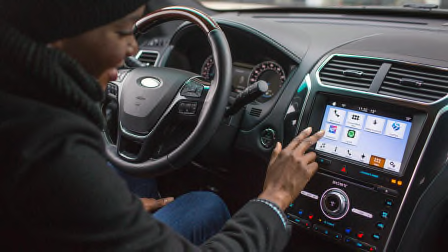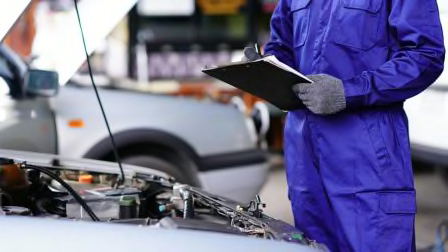As Used-Car Prices Surge, Consider Fixing the Car You Already Own
With used-car prices high and new cars scarce, getting expensive repairs on your car could be a lot cheaper than buying something else

Traditionally, someone faced with an older car that needs an expensive repair—such as engine or transmission replacement—might think about moving on to something newer. But this is not a normal time. A global shortage in the supply of microchips and other raw materials has strained new car availability and has contributed to pushing used-car prices to record highs. As of August, used-car prices had jumped nearly 8 percent over the last year—about 50 percent over pre-pandemic prices.
If your old car needs one of the dreaded major repairs that can cost thousands, now might be a good time to consider getting it fixed instead of replacing it. Even when car prices aren’t high, fixing an otherwise reliable car can save you time and money. It helps to research the safest, most reliable models when you’re buying a car, but they are machines after all, and even the best ones break—especially if they are not well cared for. (See Consumer Reports’ expert reviews and ratings.)
CR recommends doing a personal cost-benefit analysis: Divide the cost of the repair by the number of additional months you think you can get out of your car. It’s probably less than a new monthly payment. However, if your car is chronically in need of repair, it might be time to throw in the towel and buy a new or used one that’s more reliable. John Ibbotson, Consumer Reports’ chief mechanic, says that you’ll know what problems—if any—exist on the car you have, while buying another car could open up a whole new can of worms.
Tips to Get the Most Out of Your Older Car
Don’t defer maintenance. Maybe you would decline to fix a few items, such as flushing your cooling system, if you were going to get rid of your car, anyway. But if you’re going to keep it—either because the car you want isn’t available or used-car prices are too high—you should consider moving ahead with this type of maintenance. Proper maintenance will help keep your vehicle more reliable and safe to operate. This can be as simple as getting oil and other fluids changed, or it could be something more involved, such as fixing worn suspension and driveline components that tend to cause damage to other parts if left alone. Also, you should fix oil and coolant leaks that can damage the car if you forget to check levels regularly.
Research repair shops. Going to the dealership usually assures high-quality service work, but there are many comparable independent shops that charge less. CR recommends developing a rapport with a shop in any event. That way they know you and your car if your car needs a big repair. (Find quality shops in your area.)
Ask about financing. It’s always better to pay for repairs at the time of service, but according to bankrate.com, more than 60 percent of Americans don’t have enough saved up to pay for a $1,000 emergency. If you fall into this category, paying with a credit card—which may have a high interest rate—can be an expensive option. But according to RepairPal, some shops offer 0 percent financing over a period of 90 days or so to help people get rolling again.
Consider extending your warranty. In general, extended warranties aren’t usually a good deal. For starters, they don’t offer the same protection as a factory warranty. But if your car is reaching the end of its factory warranty and you don’t have enough saved up to cover the cost of a major repair, an extended warranty can, at the very least, offer peace of mind. Just make sure to carefully review the details of the warranty contract. You don’t want to go in for an engine or transmission replacement only to find that it’s not covered.




















